纪伊山地的圣地及朝圣路
世界遗产
纪伊半岛崎岖的山脉深处有三个独特的圣地:熊野三山、高野山、吉野与大峰山
这些圣地以及连接这些圣地的壮观朝圣路于2004年7月7日被列入联合国教科文组织(UNESCO)的世界遗产名录,称为“纪伊山地的圣地与朝圣路”。
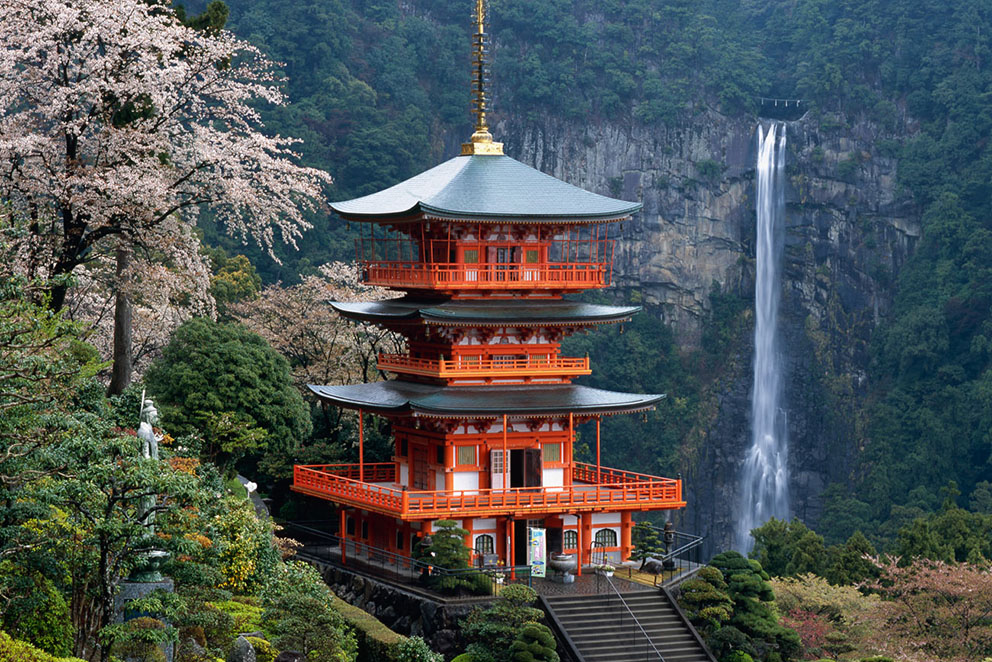
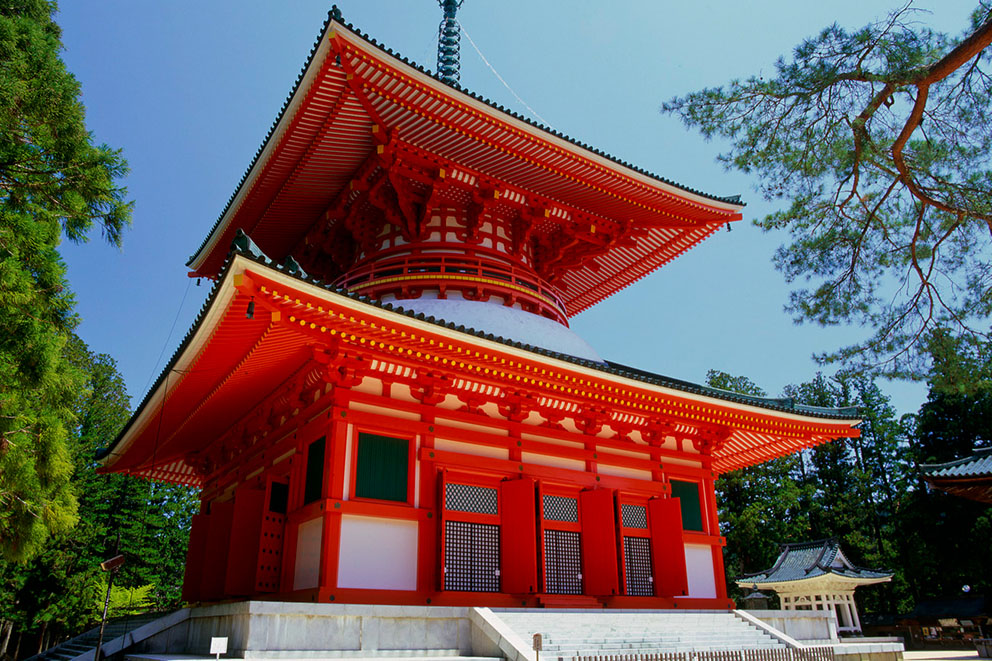
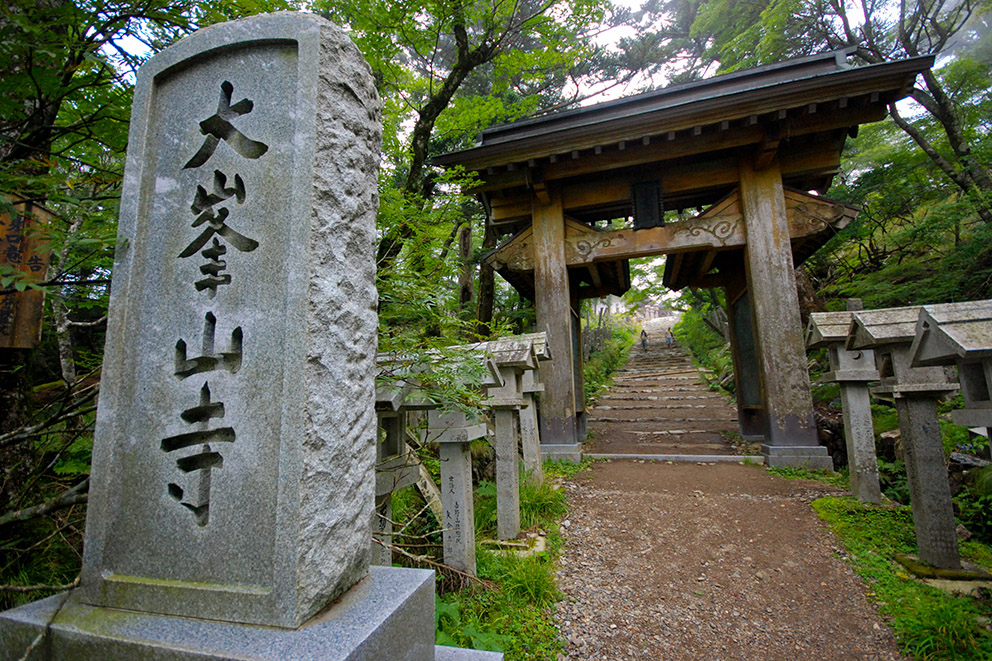

这片幅员辽阔的自然区域拥有巍峨的山脉、崎岖的海岸线、参天大树、多条瀑布和风景秀丽的河流,自古以来就受到人们的推崇。人们认为这些地方是众神的神圣居所,因此成了神道教神社的圣地。
神社逐渐与从中国和韩国传入的佛教传统相融合,形成了一种原始混合的信仰体系。
神社周围郁郁葱葱的自然环境促成了宗教融合和文化发展。纪伊半岛有着数千年的历史,其宗教传统促成了一种杰出而独特的文化景观,将自然与宗教融为一体,并且具有强大的神圣性。
熊野三山
熊野三山一词指的是位于纪伊山地东南部的三个大神社:熊野本宫大社、熊野速玉大社和熊野那智大社。
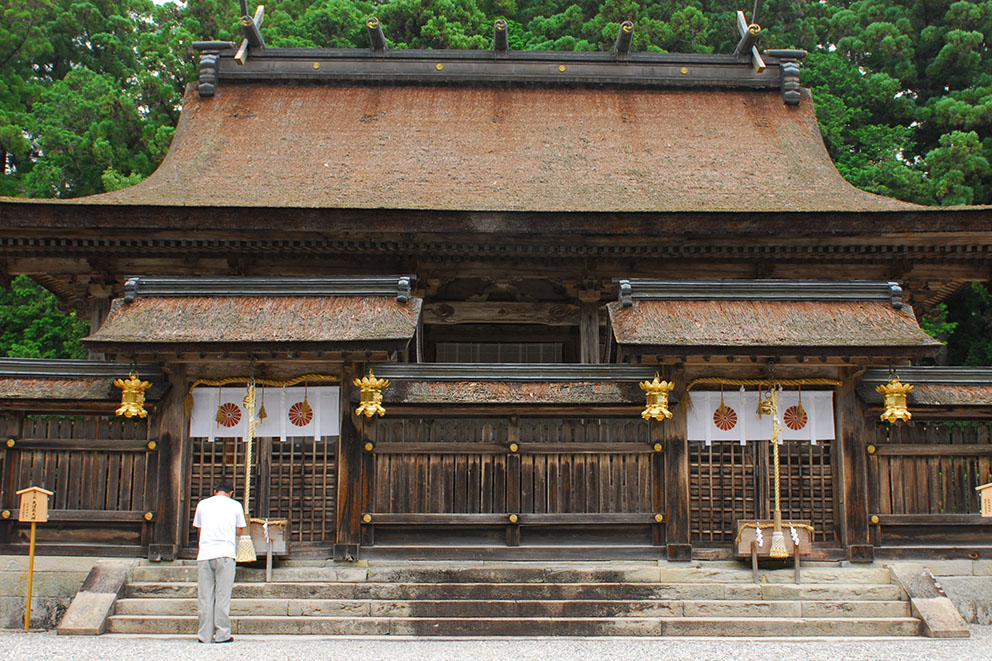
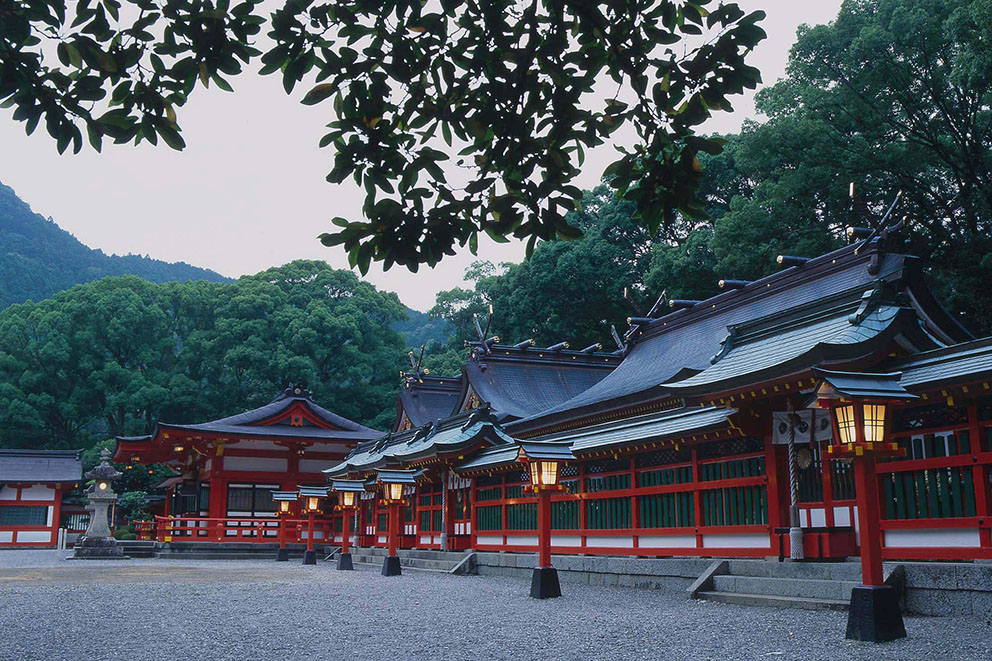
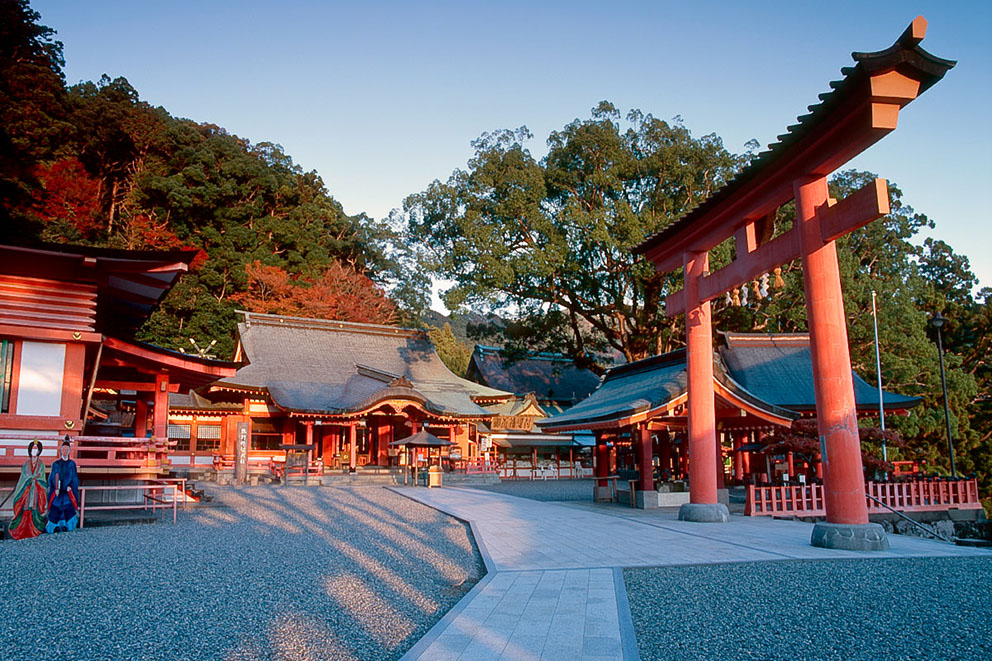
青岸渡寺和补陀洛山寺这两座佛教寺庙也与这处圣地密切相关。起初这三大神殿都有自己独特的自然崇拜形式;10世纪后期,在佛教的影响下,这三大神殿开始同时供奉三位守护神。熊野三山的熊野三神成为神道教和佛教的独特混合体,被认为是日本最强大的神。
11世纪,这些大神殿成为日本皇室和贵族的朝圣地。到15世纪后期,熊野的大多数朝圣者都是平民。到此地参观的人非常多,因此得名“蚂蚁行军”。从史前时代到现在,熊野地区一直都被人们认为是一个可以治愈疾病的地方;是众神神圣而隐秘的居所。
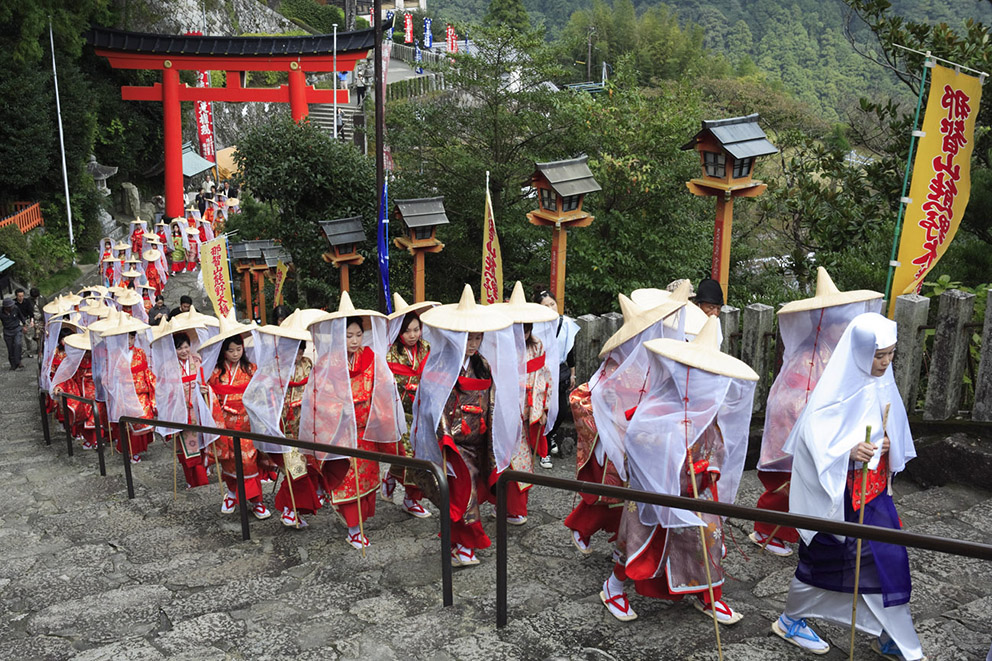
八咫乌
在熊野三山中可以找到一个有趣的主题是八咫乌(三足乌鸦)。人们认为八咫乌是神的使者和超自然的向导,在日本的创世神话中,它帮助日本的第一位天皇穿越了难以通行的熊野山脉。

对三足的解释
宇宙的三层。
天
地
人
熊野的三个古代氏族。
宇井
铃木
榎本
In Kum在熊野本宫大社中,三足也体现了主神的三种美德。
智=智慧,明悟
仁=仁慈,神明对人类的慈悲心怀
勇=勇气,用新方法克服困难
安息之地
在熊野那智大社的圣地里,有一块巨大的岩石,据信这块石头是八咫乌在指引神武天皇回到大和民族后变幻而成的。
足球圣地
八咫乌还出现在了日本足协的标志中,这是一个更加现代的用途。八咫乌的两足牢牢放在地上,第三足则用爪子抓着一只足球。这位强大的向导可以帮助把球带入对手的网中!
中村觉之助(1878-1906)是日本足球的创始人。他出生于胜浦,这使得当地的八咫乌标志登上了国家队队徽。1900年,他在东京高等学校(现筑波大学)学习期间,翻译了《足球协会》一书,为1902年足球传入日本奠定了基础。同年,中村成立了日本的第一支足球队。
UNESCO Documents
Brief Description
Set in the dense forests of the Kii Mountains overlooking the Pacific Ocean, three sacred sites – Yoshino and Omine, Kumano Sanzan, Koyasan – linked by pilgrimage routes to the ancient capital cities of Nara and Kyoto, reflect the fusion of Shinto, rooted in the ancient tradition of nature worship in Japan, and Buddhism, which was introduced from China and the Korean Peninsula. The sites (495.3 ha) and their surrounding forest landscape reflect a persistent and extraordinarily well-documented tradition of sacred mountains over 1,200 years. The area, with its abundance of streams, rivers and waterfalls, is still part of the living culture of Japan and is much visited for ritual purposes and hiking, with up to 15 million visitors annually. Each of the three sites contains shrines, some of which were founded as early as the 9th century.
Justification for Inscription
Criterion (ii): The monuments and sites that form the cultural landscape of the Kii Mountains are a unique fusion between Shintoism and Buddhism that illustrates the interchange and development of religious cultures in East Asia.
Criterion (iii): The Shinto shrines and Buddhist temples in the Kii Mountains, and their associated rituals, bear exceptional testimony to the development of Japan’s religious culture over more than a thousand years.
Criterion (iv): The Kii Mountains have become the setting for the creation of unique forms of shrine and temple buildings which have had a profound influence on the building of temples and shrines elsewhere in Japan.
Criterion (vi): Together, the sites and the forest landscape of the Kii Mountains reflect a persistent and extraordinarily well-documented tradition of sacred mountains over the past 1200 years.
Long Description
The Shinto shrines and Buddhist temples that form the cultural landscape of the Kii Mountains are a unique fusion between Shintoism and Buddhism illustrating the interchange and development of religious cultures in East Asia. They have become the setting for the creation of unique forms of shrine and temple buildings that have had a profound influence on the building of temples and shrines elsewhere in Japan.
The site consists of three sacred sites in the heavily forested Kii Mountains, a peninsula jutting into the Pacific, and a complex pattern of tracks and paths that link the sites together and to the ancient capitals of Nara and Kyoto to the north, which flourished from the 6th century to 1868. The steep, rugged mountains of the Kii Peninsula rise to 1,000-2,000 m and are heavily wooded. The natural beauty of the area, and its harsh but serene mountain environment, has probably been revered since prehistoric times. The three specific sites had become established as major sacred sites as early as the 11th or 12th centuries, attracting a great number of worshippers. The area is still part of the living culture of Japan and the sites are heavily visited and used for ritual purposes and for hiking. The pilgrim routes are not all contiguous as there are sections excluded where they have been influenced by modern development. The forested mountains underpin the significance of the whole site, for it is the beauty and drama of the mountains and their contrast with the seascape to the south which has attracted people for at least 2,000 years.
Each of the three shrines contains both buildings and objects, such as temples, shrines, statues and stupas, as well as revered natural elements such as trees, waterfalls, rocks, etc. The built structures are almost all of wood, constructed in a post and pillar construction similar to Japanese houses. Many have been successively rebuilt.
Yoshino and Omine: this is the northern-most site near to Nara. The Yoshino or northern part of the site was by the mid-10th century known as the most important sacred mountain in Japan and its reputation had reached China. It was the object of mountain worship, Shinto, in the 7th and 8th centuries and later in the 8th century became one of the prime sacred places for the Shugen sect of ascetic Buddhism. Omine, the southern part, was also associated with the Shugen sect and, in particular, with ascetic practices connected to the harsh mountain environment. This site consists of groups of buildings in what is said to be a unique architectural style constructed as an embodiment of Shinto-Buddhist religious fusion.
Kumano Sanzan: This site is the furthest south. The shrine buildings are said to show outstanding wooden architectural styles that have no comparators. Within the site are three main shrines, and two temples, connected by a pilgrims’ route. They reflect Shinto and the Shugen sect of Shinto-Buddhism, and were also closely associated with the search for the pure Buddhist land in the southern sea
Koyasan: This site south of Nara is partly in an alpine basin at an altitude of 800 m and partly at the foot of the mountains. It is actively used for annual festivals and rituals dedicated to the deity of the land and the rites of the Buddhist Shingon sect.
Pilgrim routes: As the sacred sites became established and well visited in the 11th or 12th centuries, a series of pilgrim routes were developed linking the sites to Kyoto and to other places throughout Japan – some based on earlier tracks. The routes in the mountains were designed to be arduous and the journey over them part of the religious experience, rather than a means to an end. Most of the routes are no more than 1m wide and of earth; in a few places stone steps or stone pavements were constructed, such as the 34 km stretch of stone paving through the forest, part of the Kumano Sankeimichi route between Kumano Sanzen and Ise Jungu.
Source: UNESCO/CLT/WHC
Historical Description
From the 3rd to the 2nd century BC, when rice culture was introduced into Japan and settlements began to develop in the lowlands, the Shinto religion, in which natural features such as mountains, forests, rocks and trees were revered as gods, came to be embraced – perhaps as a link to ancient dwelling sites in the hills. The mountain gods were thought to control water, essential for rice growing in the plains, and gold ore, needed as towns developed. It was also believed that the god who guided the first Emperor to build Nara the first capital resided in the mountains. Thus the Shinto religion came to be influential not only in rural areas but also in the towns as they were formed.
The introduction of Buddhism in the mid-6th century coincided with the development by the government of a centralised system of laws, following examples in China and the Korean peninsula. The government adopted Buddhism as the guardian religion for the nation and in the mid 8th century temples were built in each province of Japan. At the same time the concept of the Pure Land associated with the Kii Mountains begun to gain ground and people started to undertake training in the mountains.
In the 8th century the capital was moved to Kyoto and in the following century the esoteric Buddhist sect Mikkyo was brought to Japan from China. This stressed the belief that mountains are places for training to attain awakening. Out of this developed the local Shingon sect and many new temples were constructed in the Kii Mountains. The rise of Mikkyo/Shingon coincided with the rise in power of aristocrats whose authority was based on land ownership. They embraced this new sect, as did the Emperor who hosted various religious rites in what were coming to be seen as the sacred Kii Mountains. The new sect also interacted with Shintoism, a fusion that had been in existence since the 8th century and from this interaction the uniquely Japanese Shinto-Buddhist religion emerged which was to be a powerful force until the 19th century.
The growth of pilgrims visiting sites in the Kii Mountains seems to have coincided with the rise of social unrest around the capital in the 9th to the 10th centuries. It was at this time that many of the pilgrim routes were laid out.
In the following two centuries, 11th and 12th, the distinctly Japanese flowering of Buddhist practices, and the buildings that were associated with these beliefs, were strengthened by the government’s decision to stop sending delegations to China. The consecration of the three main sites in the Kii Mountains were all progressed, and gained considerable support from people who were wanting escape from the worsening social conditions characterised by conflict between samurai. The Imperial family, aristocrats and samurai all became benefactors of new temples and land to support them, as a means of guaranteeing a better life in the hereafter and a retired Emperor made a first pilgrimage to Koyasan and Kumano Sanzan in the late 1tth century – stimulating others to follow in ever larger numbers. This prompted the development of hospices, the improvement of shrines and temples, the construction of Oji shrines along the main routes, and the funding by the Imperial family and aristocrats of people to manage the sites.
The Kii Mountain sites were thus established by the end of the 12th century as the main sacred mountain site in Japan, and attained a status which would persist to the present day.
At the end of the 12th century the government was moved to Kamkura -although the ruling family remained in Kyoto. From the 14th to the 16th century conflict between Imperial factions, the grip on power by the samurai and battles between feudal lords meant a weakening of Imperial and centralised authority, but at the same time the growth of a monetary economy and improved methods of production led to a new rich class. Pilgrimages were now extended to anyone who could afford the journey.
From the 17th until 1868 a powerful feudal government was established in Edo (later Tokyo) and much of the land associated with temples was absorbed by the government. Support however for the temples continued form the government and ordinary people. At the same time improved roads made travel easier and the number of pilgrims begun to increase, as did those wanting to travel as tourists.
In 1868 the Emperor took control from the feudal government and the Imperial capital was moved to Tokyo. The new government introduced measures to control religions in Japan, and issued the Shintoism and Buddhism Separation Decree in 1868. This prohibited activities related to the Shinto-Buddhist fusion and statues of Buddha were removed from shrines. However because of the strong support by society at large for the Kii Mountains and their shrines, many survived. Such was the outflow of cultural properties from Japan as a result of the law that in 1897 the government brought in the Ancient Shrines and Temples Preservation Law, strengthening it is 1929, and extending it in 1919 to include natural sites.
After World War II, with the revitalising of the economy, visitors once again returned to the Kii Mountains and still visit in large numbers.
Source: Advisory Body Evaluation
